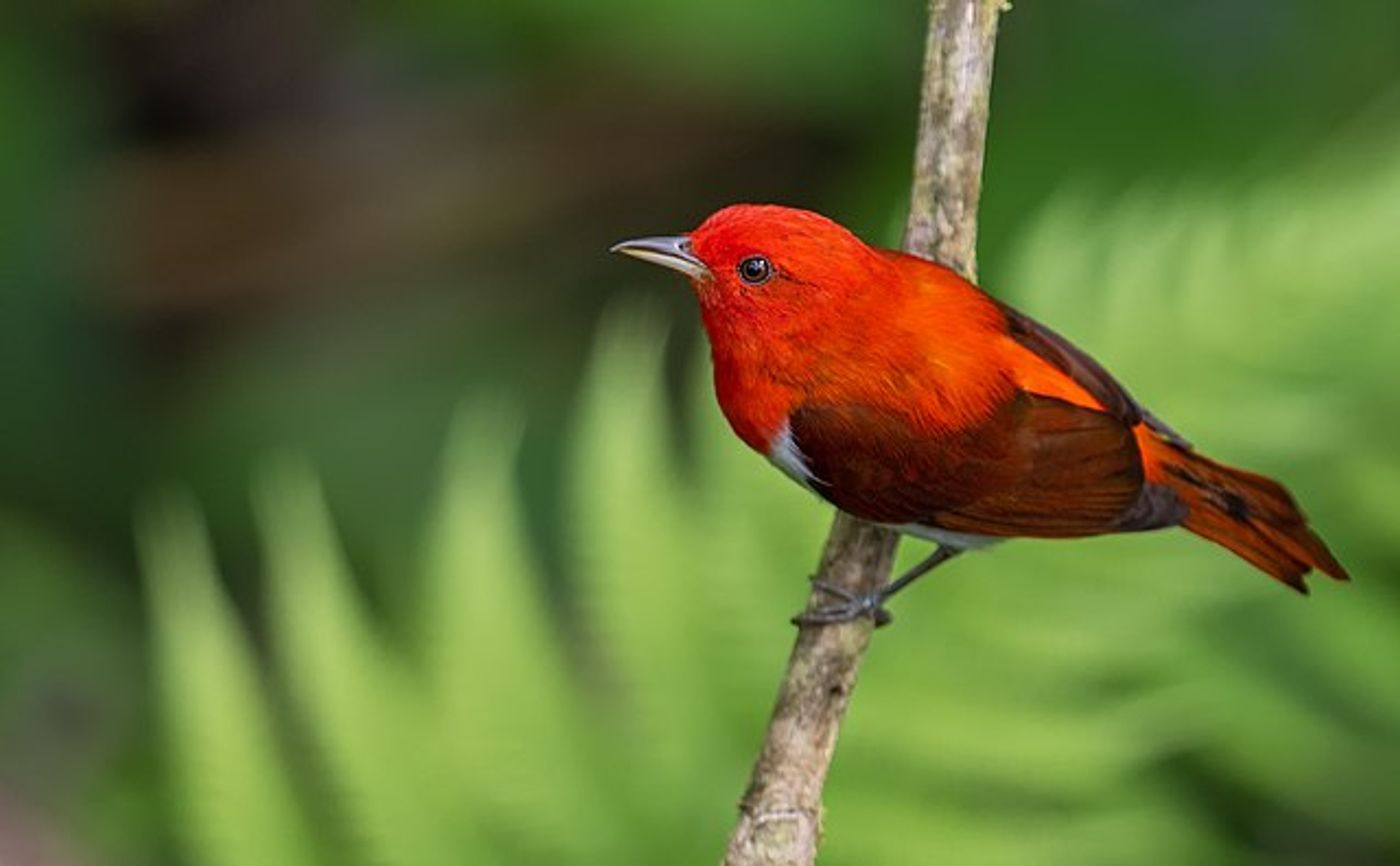A new hybrid songbird from Pennsylvania
The definition of a species is highly contentious. Yes, many of us are taught in biology courses that a species is an animal that can reproduce and produce viable offspring, and while reproduction may be an important component of defining a species, there is much more to consider. Take, for example, a hybrid species—or an animal that is the offspring resulting from two different organisms (i.e., different breeds, species, genera). We see hybridization in macaque monkeys, for example, when two different species hybridize at a geographical border.
And now, researchers have identified a new hybrid songbird in western Pennsylvania. The hybrid is the result of a female rose-breasted grosbeak (Pheucticus ludovicianus) and male scarlet tanager (Piranga olivacea). Oddly, these two species are very distinct, having last shared a common ancestor over 10 million years ago. The rose-breasted grosbeak nests along the open edge of woodlands, while the scarlet tanager ness in mature forest canopies. Meaning, it was very unlikely for the two to interbreed.
The hybrid—first spotted by an avid birder—was identified using whole-genome sequencing and an analysis of vocalizations. The first sighting of the hybrid was noted in June 2020, when the birder aimed to photograph a scarlet tanager after hearing a song usually attributed to them, but found what looked like a male rose-breasted grosbeak with unusual plumage. Distinctions from the typical male rose-breasted grosbeak included black wings and a tail that did not have white markings, yellow-wish underwings (rather than pink), and a pink (instead of black) throat. Morphologically, this bird had a more elongated and shallower bill which was darker than that of a typical rose-breasted grosbeak. Moreover, the bill lacked the tomial tooth, or the protrusion on the upper bill of some birds which is a hunting adaptation.
Given the differences in appearances, scientists from Pennsylvania State University, University of Pittsburgh, and other Pennsylvania-based research institutions, used vocal and genomic analyses to identify this new bird. The combination of evidence—morphology, plumage, vocalizations, and genetics—supports the idea that this is, in fact, a hybrid species. It is remarkable, especially since the two parent taxa are known to be highly divergent and a hybrid between the parent species has not been documented prior.
The observation of this hybrid bird suggests that it lived until adulthood and behaved like a typical passerine (birds belonging to the order Passeriformes, commonly known as perching birds like sparrows). The research team notes that they could not verify whether this specific individual reproduced, and also sadly could not relocate the bird the following year. Nevertheless, the first documentation of a rose-necked grosbeak x scarlet tanager is an important step in understanding the evolution of North American birds.
Sources: National Geographic, Labroots, Ecology and Evolution, WESA










